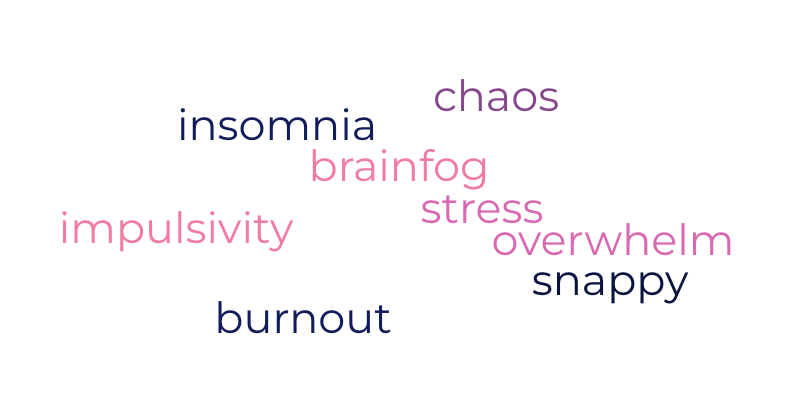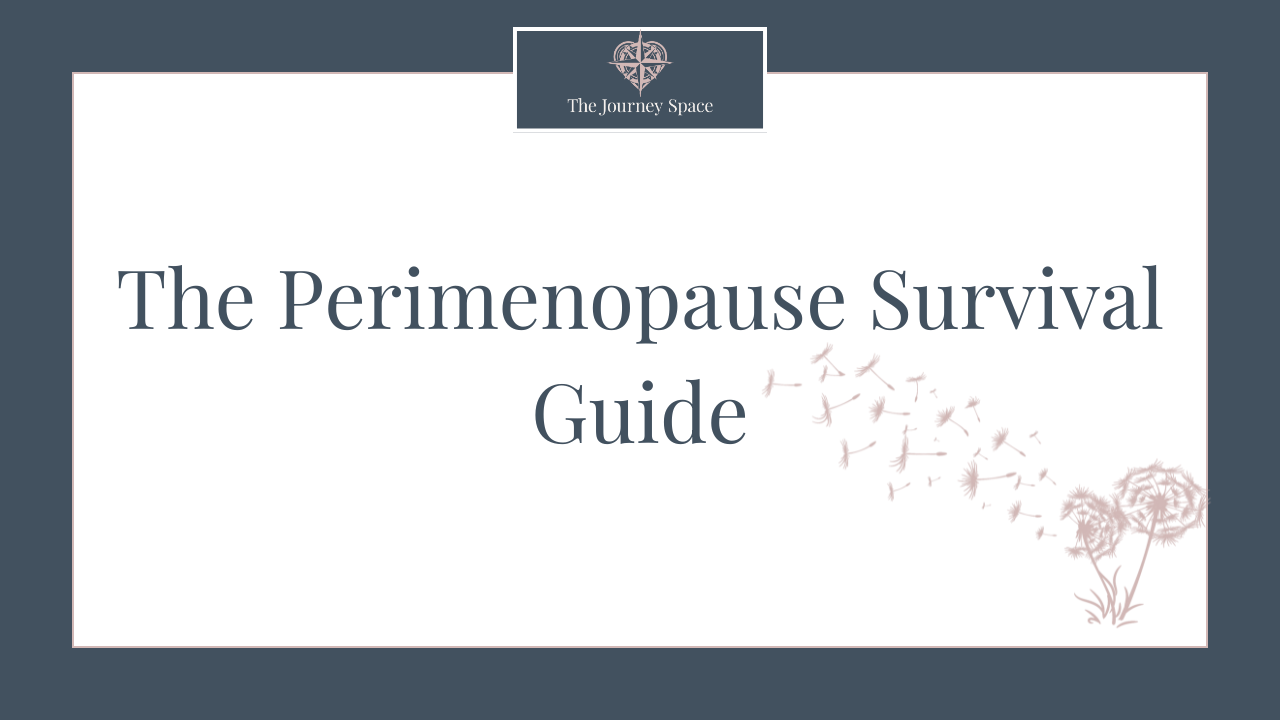
The Connection Between Perimenopause & ADHD
In the autumn/winter of 2023, I began what I thought was a months long mental meltdown. ADHD came quickly onto my radar after my daughter self-diagnosed and I realised that I shared many of the traits of this debilitating condition. But the scary thing was that all of a sudden, these traits (always doing 5 things at once, lack of motivation & focus, sensitivity to sensory stimuli, inability to stick at something plus so much more) seemed to be taking me over completely.
As we move into middle age we expect physical changes. The world is full of solutions for combating saggy skin, weight gain, thinning hair, loss of strength. However, nobody seems to be talking much about Perimenopause & mental health and what huge challenges this can bring.
This transitional phase can bring about a host of symptoms that vary from person to person, including mood swings, sleep disturbances, and cognitive changes. For women who also have Attention Deficit Hyperactivity Disorder (ADHD) - or experience ADHD like sypmtoms - these changes can be a shock =-- leading to loss of identity, overwhelm not to mention emotional turmoil. Let’s delve into how perimenopause can influence ADHD symptoms and explore ways to manage these changes effectively.
What is Perimenopause?
Perimenopause is the period leading up to menopause, marked by hormonal fluctuations as the body transitions to a new stage of life. This phase can last several years, during which estrogen and progesterone levels fluctuate unpredictably.
Women may experience a range of symptoms, including hot flashes, night sweats, irregular periods, and cognitive changes like memory lapses and decreased concentration.
The Intersection of Perimenopause and ADHD
ADHD, characterised by inattention, hyperactivity & impulsivity, is often a lifelong condition that can be challenging to manage under normal circumstances. During perimenopause however, the hormonal shifts can intensify these symptoms for several reasons:
1. Hormonal Influence on Mood and Cognition
Estrogen plays a crucial role in regulating neurotransmitters like dopamine, which are vital for attention and mood regulation. As estrogen levels fluctuate during perimenopause, women may experience increased mood swings, anxiety, and depressive symptoms. For those with ADHD, these mood changes can disrupt focus and exacerbate impulsivity, making it harder to navigate daily tasks.
2. Sleep Disruptions
Many women experience sleep disturbances during perimenopause, whether due to night sweats, anxiety, or hormonal changes. Poor sleep can significantly impact cognitive function, particularly attention and memory—areas that are already challenging for individuals with ADHD. A lack of restorative sleep can lead to increased irritability and difficulty concentrating, further complicating the management of ADHD symptoms.
3. Cognitive Fog
“Brain fog” is a common complaint during perimenopause, often described as difficulty concentrating or forgetfulness. This cognitive impairment can be particularly troubling for women with ADHD, who may already struggle with attention and memory. The additional cognitive load can lead to frustration and decreased self-esteem, compounding the challenges of managing ADHD.
4. Increased Emotional Sensitivity
Hormonal changes can heighten emotional responses, making women more sensitive to stress and frustration. For those with ADHD, who may already experience emotional dysregulation, this increased sensitivity can lead to outbursts or emotional overwhelm, further complicating relationships and daily functioning.

Strategies for Managing Symptoms
While the interplay between perimenopause and ADHD can be challenging, there are several strategies that can help women navigate this transitional phase more effectively:
1. Prioritise Sleep Hygiene
Establishing a consistent sleep routine can help mitigate sleep disturbances. Consider creating a relaxing bedtime ritual and a postive morning routine to set you on the right track. For example - ditch the screen-time after 8pm.
Practice a relaxation routine such as breathwork, yoga Nidra or a guided relaxation before bed. In the morning aim to get the sun on your face before you look at your phone. Take deep breaths and stretch and move your body for 10 minutes first thing.
2. Practice Mindfulness and Stress Management
Techniques such as mindfulness, meditation and yoga can help manage stress and improve emotional regulation. Somatic exercises and breathwork are particularly powerful in balancing stress levels and bringing a sense of calm and stability back into your life. These practices can be particularly beneficial for women experiencing the emotional swings associated with both perimenopause and ADHD.
3. Stay Organised
Utilising planners, apps & reminders can aid in managing forgetfulness and maintaining focus. Breaking tasks into smaller manageable steps can also reduce overwhelm and improve productivity.
Don't be too hard on yourself! Set small daily goals (3 per day) and tick them off as you achive them. Reward yourself with a coffee or 10 mins scrolling after you've done your task.
4. Connect with Support Groups
Finding a community of women such as you'll find at The Journey Space, who are experiencing similar challenges will provide a sense of empathy, emotional support and practical advice. Sharing experiences and coping strategies can be empowering and comforting.
Conclusion
The intersection of perimenopause and ADHD is a complex but important area to explore. Understanding how hormonal changes can exacerbate ADHD symptoms is crucial for women navigating this transitional period. By employing effective management strategies and seeking appropriate support, women can better cope with the challenges of both perimenopause and ADHD, leading to a more balanced and fulfilling life.
With love & calm
Emma
PS: Get our FREE Perimenopause Survival Guide- CLICK HERE


